Whenever the name Francisco Goya is mentioned, we remember a great artist who had a lot of personal trials in his life. Not only was Goya an exemplary artist, but he also significantly influenced countless others.
Among the artists inspired by Goya were Pablo Picasso and Édouard Manet, both of whom honored him through their artworks. Furthermore, Francis Bacon was deeply influenced by Goya’s art. These and other artists stand as a testament to an artist who pushed boundaries in his art so that his legacy continues to inspire and shape the art world.
Table of Contents
- Francisco Goya: The Enduring Legacy Of Artistic Inspiration For Other Artists
- Goya’s Timeless Importance And Why His Artistic Influence Is Important
- Frequently Asked Questions
- Related Questions
Francisco Goya: The Enduring Legacy Of Artistic Inspiration For Other Artists
In the tapestry of art history, few names shimmer with as much persistence and reverence as Francisco Goya. Beyond the boundaries of time, culture, and geography, Goya’s art has been a potent source of inspiration for countless artists.

From the sultry provocations of his paintings to the chilling rawness of his sketches, he has, over the centuries, become the silent muse behind many modern masterpieces.
Let’s journey through the corridors of art history, exploring how Goya’s legacy shaped the canvases of some of the most iconic artists of the 19th and 20th centuries and continues to resonate in the contemporary world.
Édouard Manet’s ‘Olympia’: A Bold Reimagining From Francisco Goya
Édouard Manet’s “Olympia” (1863) is often celebrated as a hallmark of modern art. But beyond the striking gaze of the nude woman lies the shadow of Goya’s “Maja.” The similarities in composition are undeniable.

Both paintings feature a reclining nude, unapologetically confronting the viewer. But while Goya’s “Maja” epitomizes sensuality, Manet’s “Olympia” is a defiant challenge to the academic art traditions and societal norms of the time.
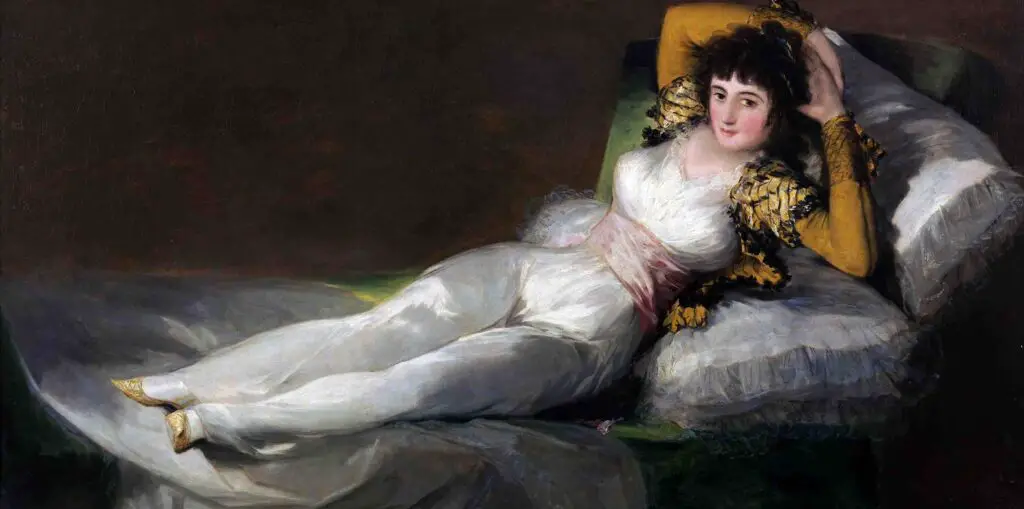
The influence is evident, but Manet’s interpretation is bold and contemporary, showcasing how Goya’s work can be reimagined to reflect the ethos of a new era.
Picasso And The Dance Of The Bull And Francisco Goya’s Influence
Pablo Picasso’s admiration for Goya is hardly a secret. Goya’s series of prints on bullfighting resonated deeply with Picasso’s dynamic interplay of aggression, fear, and raw emotion.
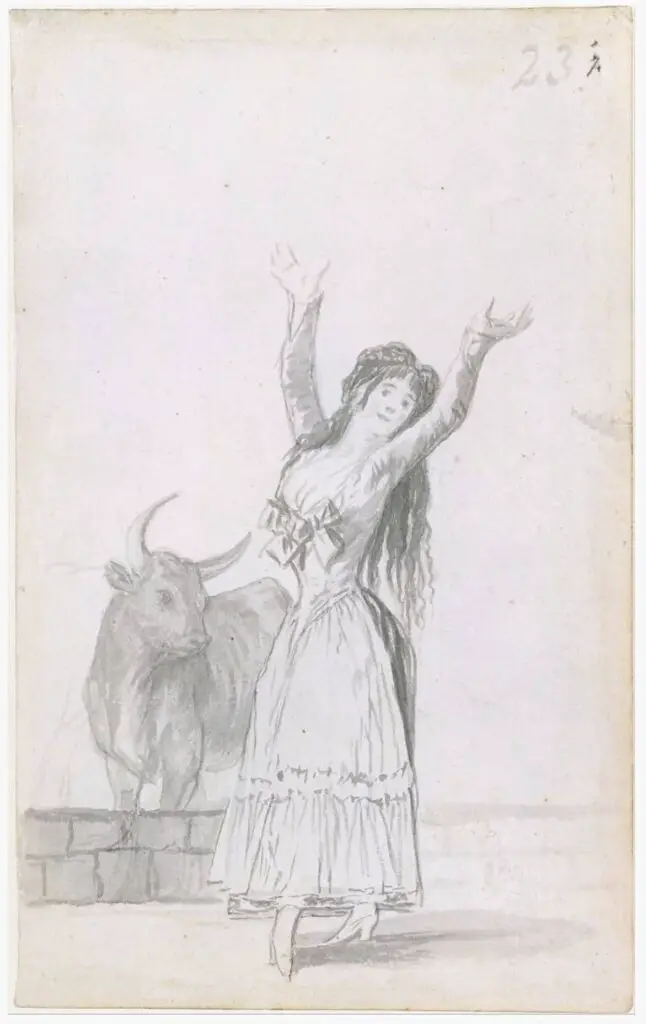

The bull, a recurrent motif in Picasso’s works, symbolizes the raw, untamed forces of nature and life. Picasso’s “Bull’s Head” (1942), crafted from a bicycle seat and handlebars, is a nod to Goya’s ability to capture the spirit of the bull without the need for meticulous representation.
Francis Bacon: Goya’s Modern Heir And Influence
Suppose there’s a modern artist who echoes Goya’s unfiltered exploration of human anguish. In that case, it’s Francis Bacon, as Goya did not shy away from depicting the horrors of war and human suffering.
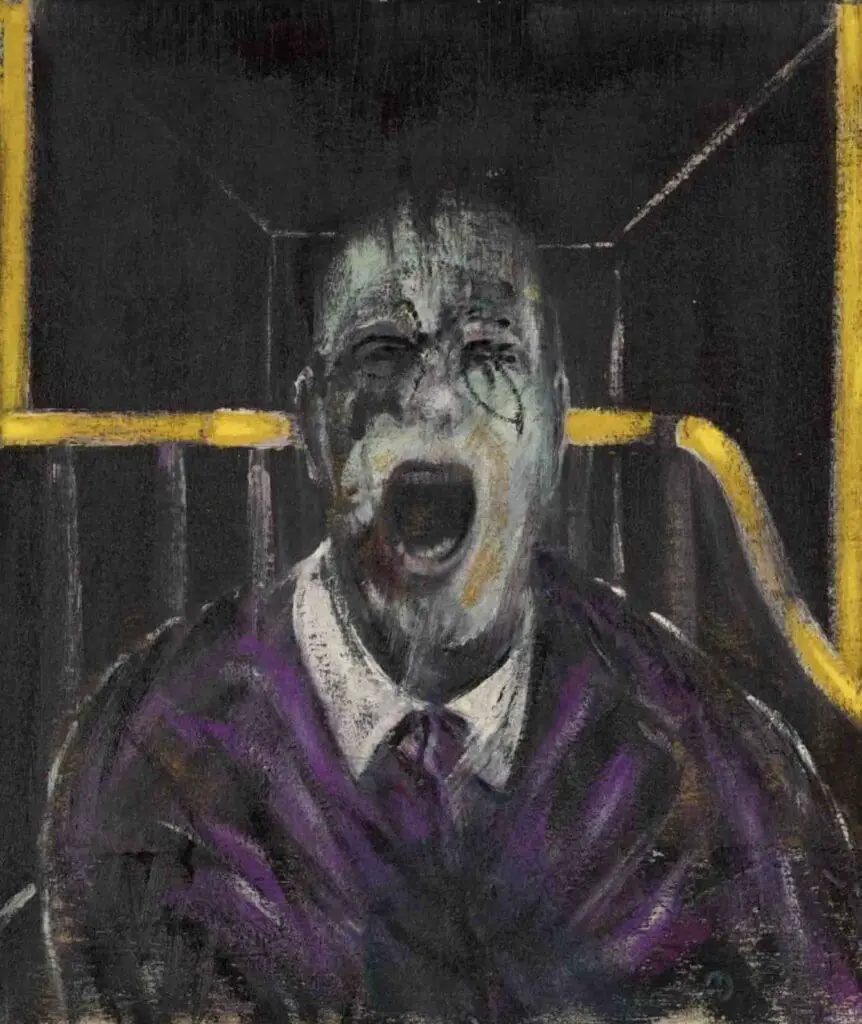
Bacon’s art is an unflinching gaze into the abyss of human existence. His triptychs, distorted figures, and nightmarish ambiance are modern-day reflections of Goya’s Black Paintings.
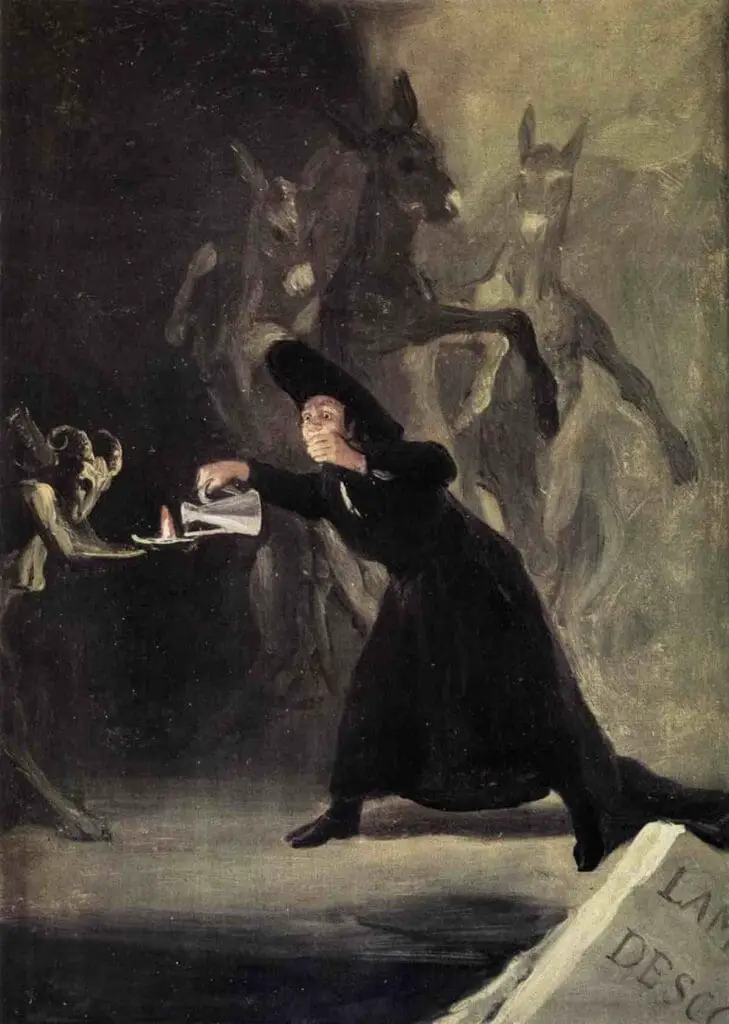
Though separated by centuries, both artists connect on a plane of existential exploration, proving the timelessness of core human emotions.
Goya’s Timeless Importance And Why His Artistic Influence Is Important
Goya’s importance in contemporary art isn’t just about stylistic influence but also his work’s essence. He had an unparalleled ability to tap into the human psyche, presenting raw emotion without the need for pretense. In an age where art continually evolves, Goya’s works remind artists of the power of authenticity.
His art transcends time, serving as a bridge between classical traditions and modern interpretations. For modern artists, Goya exemplifies the courage to break free from conventions, experiment, and stay true to one’s vision. His influence encourages artists to confront, reflect, and reimagine, ensuring that art remains a dynamic, ever-evolving force.
Francisco Goya’s legacy in the realm of art is unbeatable. As artists continue to seek inspiration and push the boundaries of creativity, Goya’s works stand as a testament to the enduring power of authentic expression.
In his brushstrokes, generations of artists find the courage to explore, innovate, and redefine the contours of art.
Francisco Goya: The Luminous Shadow Of Spanish Art
Francisco José de Goya y Lucientes, more commonly known as Francisco Goya, was born in the small town of Fuendetodos in Aragón, Spain, in 1746.
Over his lifetime, he would ascend to become not only one of the most significant Spanish painters and printmakers of his era but also a figure whose works would transcend his time, serving as a bridge between the Old Masters and the modern world.
Early Life And Artistic Beginnings of Francisco Goya
Goya’s artistic journey began in Zaragoza under the tutelage of José Luzán, a local painter. Later, he moved to Madrid and was profoundly influenced by the works of Diego Velázquez, a Spanish Golden Age artist whose techniques and thematic explorations would become foundational for Goya.
Royal Patronage And Rising Fame
By his late thirties, Goya had achieved a position as a court painter, one of the most prestigious posts an artist could hope for in Spain. He became the principal portraitist for the Spanish Crown, capturing the likeness and, often, the spirit of his subjects with an uncanny realism.
Goya’s Transformative Experiences:
Beyond his official portraits, Goya was deeply affected by his time’s societal and political upheavals, such as the Peninsular War. This led to some of his most famous works like “The Second of May 1808” and “The Third of May 1808”, which poignantly capture the brutality of war and the human anguish it begets.

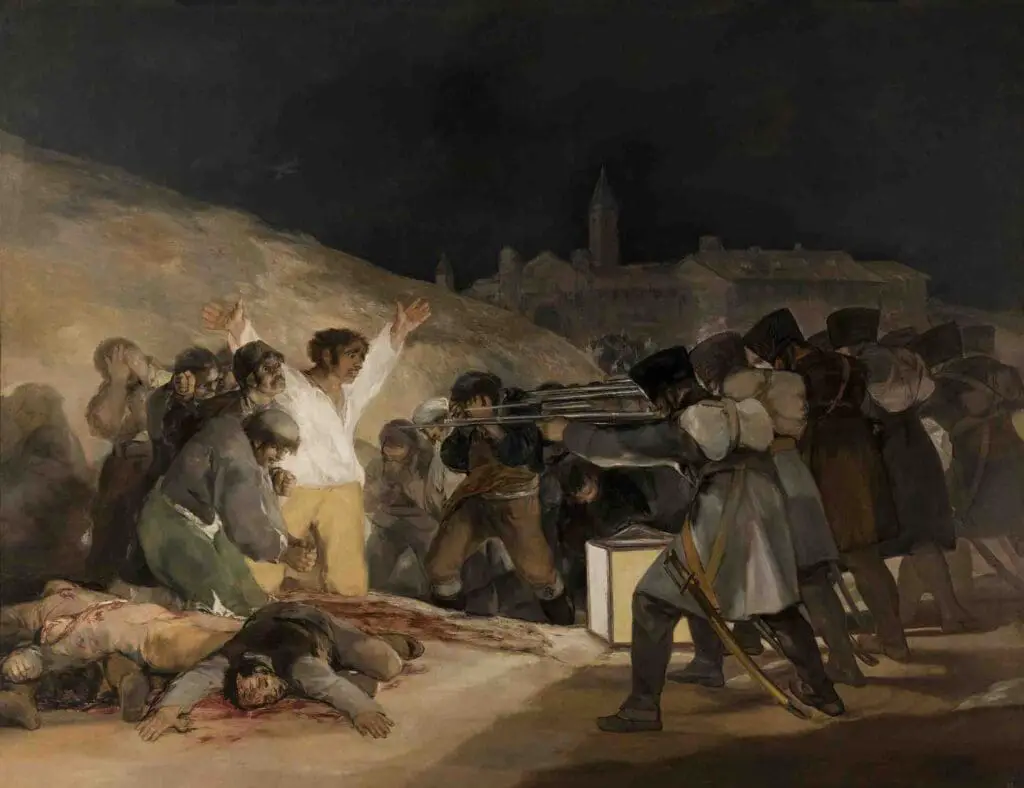
A severe illness in his late forties left Goya deaf, an isolation that profoundly affected his work. His later pieces, including the haunting ‘Black Paintings,’ delve into themes of madness, decay, and otherworldly visions.
Legacy And Importance Of Francisco Goya
What sets Goya apart and cements his place in the annals of art history are several factors:
Transitionary Figure:
Goya stands at the crossroads of the traditional and the modern. While his early works adhered to the Rococo style, his later works, with their dark themes and experimental techniques, foreshadowed the upcoming Romantic era.
Master Of Multiple Mediums:
Apart from paintings, Goya was a prolific printmaker. His series of etchings, particularly “Los Caprichos” and “The Disasters of War,” are considered groundbreaking for their technique and their scathing social commentary.
Authentic Expression:
Whether he was painting Spanish royals or exploring his darkest fantasies, Goya’s works are characterized by their honesty. He never shied away from depicting the rawness of reality, making him an artist ahead of his time.
Social Commentary:
Goya was an observer and a commentator on society. His works touched upon themes like war’s inhumanity, societal norms’ absurdities, and the subconscious’s haunting realms.
Enduring Influence:
His undeniable influence on later art movements and artists, from Pablo Picasso and Édouard Manet to Francis Bacon, speaks to the universality and timelessness of his creations.
Francisco Goya is not just a Spanish national treasure but a towering figure in global art. His willingness to experiment, coupled with his intelligent commentary on the human condition, makes him an artist whose works are not just to be admired but deeply pondered upon. His legacy is a testament to the power of art to reflect, challenge, and transcend its time.
Anita Louise Art is dedicated to art education, great artists, and inspiring others to find and create their art. We love art that uplifts and inspires. #ArtToMakeYouSmile! #ArtToMakeYouHappy!
If you want to see any of my art, you can find out more by clicking here. If you are interested in what inspires me and my paintings, you can discover more by clicking here.
We have a free newsletter and would love you to be part of our community; you can subscribe to the newsletter by clicking here. I would be happy to talk to you anytime if you have any questions. You can reach me, Anita, by clicking here.
Subscribe to our Anita Louise Art YouTube Channel with great videos and information by clicking here.
Join us for our podcast “5 Minutes With Art.” Spend 5 minutes a week with us to discover and learn about great art and artists. You can find out more about our podcast by clicking here.
Frequently Asked Questions
How did Francisco Goya influence Pablo Picasso’s artistic style?
Explore the specific elements of Goya’s work that left a lasting impact on Picasso’s innovative approach to art.
In what ways did Édouard Manet draw inspiration from Francisco Goya’s paintings?
Examine the connections between Goya’s themes and techniques and Manet’s evolution as an artist.
How did Goya’s depiction of social and political issues resonate with later artists like Francis Bacon?
Investigate the influence of Goya’s powerful commentary on Bacon’s exploration of existential and societal concerns.
What aspects of Goya’s dark and introspective paintings influenced the Surrealist movement?
Delve into how Surrealist artists drew inspiration from Goya’s psychological depth and symbolic imagery.
How did Goya’s use of satire impact subsequent generations of political artists?
Explore the ways in which Goya’s satirical approach to politics laid the groundwork for artists addressing contemporary issues.
In what manner did Goya’s technical innovations inspire 19th-century Realist painters like Gustave Courbet?
Examine the influence of Goya’s mastery of technique on Realist artists seeking authenticity in their depictions of everyday life.
How did Goya’s exploration of the human condition influence Expressionist painters such as Ernst Ludwig Kirchner?
Analyze Goya’s portrayal of human emotion and suffering as a precursor to the emotive expressions found in Expressionist art.
Can Francisco Goya be considered a precursor to the modern protest art movement?
Investigate how Goya’s commentary on social injustice paved the way for artists using their work as a form of protest in the 20th century.
In what ways did Goya’s use of symbolism impact Symbolist artists like Odilon Redon?
Explore the symbolic language in Goya’s art and its resonance in the works of Symbolist painters who sought deeper meanings.
How did Francisco Goya’s prints influence printmakers in the 20th century, such as Kathe Kollwitz?
Examine the enduring impact of Goya’s innovative printmaking techniques on later artists committed to social and political themes.
Related Questions
Salvador Dalí And Pablo Picasso, Similarities And Differences
Salvador Dalí and Pablo Picasso are two of the most iconic and influential artists of the 20th century. These Spanish painters revolutionized the art world with their unique styles and groundbreaking approaches to art. Although they were contemporaries and shared a common heritage, their styles differed vastly, and their artistic visions diverged significantly.
By clicking here, you can learn more by reading Salvador Dalí And Pablo Picasso, Similarities And Differences.
Differences Between Leonardo da Vinci And Pablo Picasso
Leonardo da Vinci and Pablo Picasso lived in entirely different times; their artwork is also very different. Both are considered artistic geniuses who influenced art movements and were essential artists during the time and place they lived. Leonardo only painted a few paintings, whereas Picasso was a prolific artist.
By clicking here, you can learn more by reading Differences Between Leonardo da Vinci And Pablo Picasso.
40 Inspiring Quotes From The Artist Pablo Picasso
The Spanish artist Pablo Picasso lived a very long life. During his lifetime, he gave us many inspiring quotes about art, love, and living life. These are some of our favorite quotes by Pablo Picasso.
By clicking here, you can learn more by reading 40 Inspiring Quotes From The Artist Pablo Picasso.

